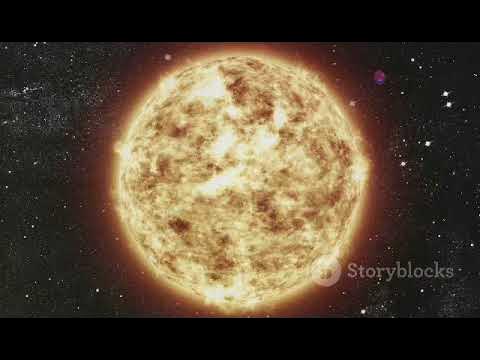Future Elements - Periodic Table of Videos
Summary
TLDRIn Dubna, Russia, the birthplace of six super-heavy elements, the quest to create elements 119 and 120 is underway. These elements would begin the eighth period of Mendeleev's periodic table. Challenges include selecting appropriate projectiles and targets, with new technologies needed to prevent target overheating. The 'super-heavy element factory' in Dubna, featuring a massive 1100-ton magnet for a cyclotron, is poised to conduct these experiments, potentially leading to the discovery of elements 119 and 120 in the coming years.
Takeaways
- 🧪 The birthplace of six super-heavy elements is Dubna, Russia, where the Mendeleev Embankment and a statue of Dmitri Mendeleev are located.
- 🔬 Elements 119 and 120 are significant as they will begin the eighth period of the periodic table.
- 🤔 The creation of these elements is more of a technical challenge rather than a theoretical one; the methods are understood, but the best approach is still being determined.
- 🚀 Success in creating elements 113 to 118 involved accelerating a light atom towards a target, specifically calcium-48, which has a high neutron count.
- 💡 The production of element 119 requires einsteinium (element 99) as a target, but einsteinium is difficult and expensive to produce.
- 🔥 A new technology must be developed to prevent the target from overheating due to the intense beam required for the reaction.
- ⚔️ Alternative projectiles such as titanium-51 or chromium-54 are being considered, but they have lower chances of successful collisions.
- 🏗️ A new facility, dubbed the 'super-heavy element factory,' is being constructed in Dubna to house the necessary equipment for these experiments.
- 🧲 The facility features a massive magnet for a cyclotron, which will accelerate ions to about a tenth of the speed of light.
- 🌐 The separator in the facility can direct the beam to one of five different experimental setups, showcasing the versatility of the research environment.
- 🔮 The room where elements 119 and 120 are expected to be created has been prepared, with holes drilled for the beam, offering a direct view of the accelerator.
Q & A
Where is the speaker located at the beginning of the transcript?
-The speaker is located in Dubna, Russia, which is the birthplace of six super-heavy elements.
What significant feature of the periodic table do elements 119 and 120 represent?
-Elements 119 and 120 are special because they will begin the eighth period, the eighth row of Mendeleev's periodic table.
What was the speaker's initial doubt about the creation of elements 119 and 120?
-Before visiting Dubna, the speaker had real questions about whether it was possible to ever create elements 119 and 120.
What has been the key to success in creating elements 113 to 118?
-The key to success in creating elements 113 to 118 has been the use of a light atom projectile, specifically calcium-48, which is accelerated towards a target.
What is the challenge in creating element 119?
-The challenge in creating element 119 is the need for element 99 (einsteinium) as a target material, which is very difficult and expensive to produce.
What alternative projectiles are being considered for creating super-heavy elements?
-Alternative projectiles being considered are titanium-51 and chromium-54, which could be used with existing targets.
What technical problem arises when using titanium or chromium as projectiles?
-Using titanium or chromium as projectiles results in a lower chance of successful collisions, requiring a much more intense beam.
What is the 'super-heavy element factory' mentioned in the transcript?
-The 'super-heavy element factory' is a special new facility in Dubna being built with a more intense beam for conducting experiments to create super-heavy elements.
Who gave the speaker a private tour of the new facility?
-Yuri Oganessian, the person after whom element 118 (oganesson) was named, gave the speaker a private tour of the new facility.
What is the current status of the accelerator at the 'super-heavy element factory'?
-At the time of the transcript, the magnet for the cyclotron (the accelerator) had just been placed, and they were in the process of measuring the magnetic field before assembling the actual accelerator.
What is the significance of the empty room with drilled holes in the walls?
-The empty room with drilled holes in the walls is significant because it is where the targets for creating elements 119 and 120 will be placed, and it represents the potential birthplace of these new elements.
Outlines

このセクションは有料ユーザー限定です。 アクセスするには、アップグレードをお願いします。
今すぐアップグレードMindmap

このセクションは有料ユーザー限定です。 アクセスするには、アップグレードをお願いします。
今すぐアップグレードKeywords

このセクションは有料ユーザー限定です。 アクセスするには、アップグレードをお願いします。
今すぐアップグレードHighlights

このセクションは有料ユーザー限定です。 アクセスするには、アップグレードをお願いします。
今すぐアップグレードTranscripts

このセクションは有料ユーザー限定です。 アクセスするには、アップグレードをお願いします。
今すぐアップグレード5.0 / 5 (0 votes)






